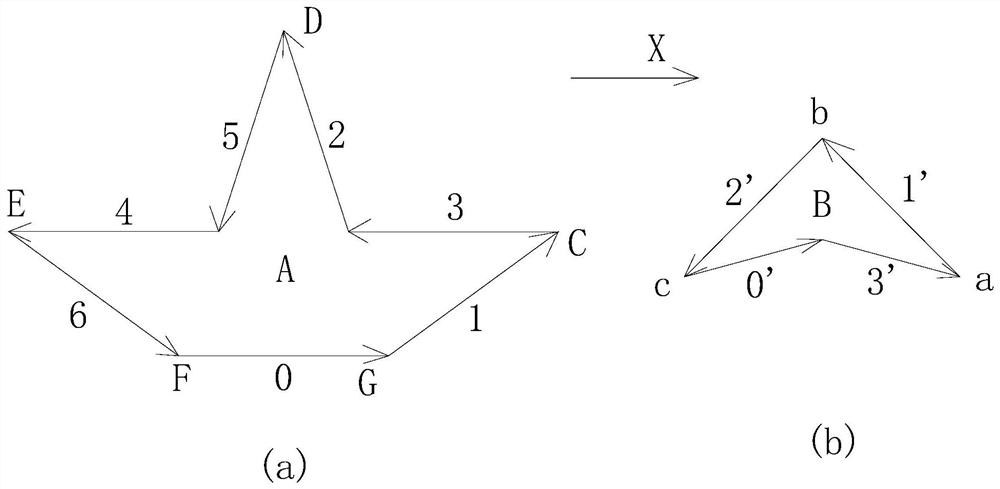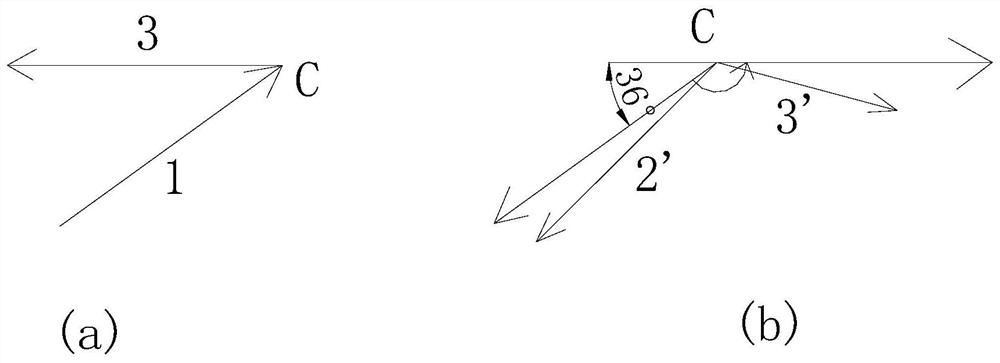Two-dimensional plate layout method
A technology of sheet and preset orientation, applied in the field of layout, can solve the problems of instability, high time complexity, and inability to directly calculate the concave polygon NFP, etc., to achieve the effect of reducing the amount of calculation and high efficiency
- Summary
- Abstract
- Description
- Claims
- Application Information
AI Technical Summary
Problems solved by technology
Method used
Image
Examples
Embodiment
[0065] The present application provides a method for laying out two-dimensional sheets, which can be applied to laying out polygonal sheets of any shape, and is simple, effective, easy to implement, and more efficient than existing methods.
[0066] see Figure 1 to Figure 8 Specifically, the method is described by taking the illustrated structure as an example, figure 2 A part in the shape of a polygon A and a part in the shape of a polygon B are shown, both of which are concave polygons. Among them, polygon A is a fixed polygon, and polygon B is a translation polygon, that is, a critical polygon can be obtained by translating polygon B around polygon A.
[0067] To facilitate the description of the solution, it is taken as an example that both polygon A and polygon B have counterclockwise vector edges (hereinbelow, part of the content is simply referred to as edges). Of course, the vector sides of the polygon are not necessarily in the same anti-clockwise direction, and t...
PUM
 Login to View More
Login to View More Abstract
Description
Claims
Application Information
 Login to View More
Login to View More - R&D
- Intellectual Property
- Life Sciences
- Materials
- Tech Scout
- Unparalleled Data Quality
- Higher Quality Content
- 60% Fewer Hallucinations
Browse by: Latest US Patents, China's latest patents, Technical Efficacy Thesaurus, Application Domain, Technology Topic, Popular Technical Reports.
© 2025 PatSnap. All rights reserved.Legal|Privacy policy|Modern Slavery Act Transparency Statement|Sitemap|About US| Contact US: help@patsnap.com



